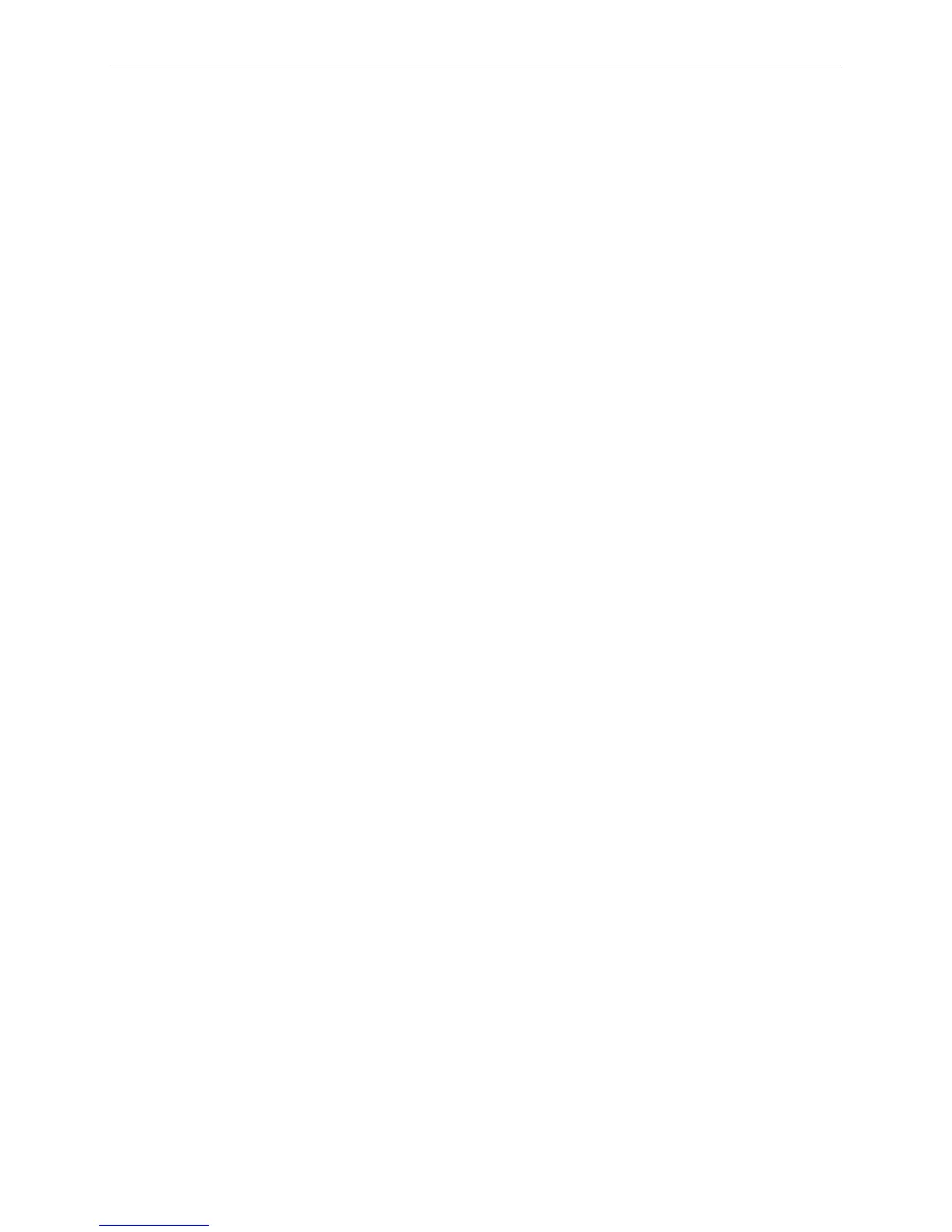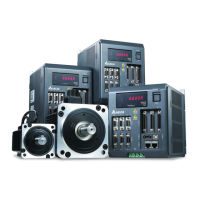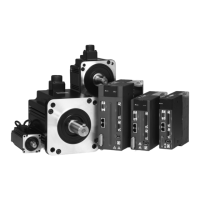ASDA Series Application Note Application Examples
March, 2015 3-109
Step 2: Filter setting
In order to have a more smooth operation of the cam and reduce the position error caused by DI
noise (for example, the vibration during the delivering of the wrapping film will cause slight
difference when DI is reading the mark), the filter can help for increasing the stability of
positioning.
P2-73.YX sets the filter range. When DI.ALGN is triggered and enables positioning, the system
will detect the current position of the cam. If the previous position error is less than the setting
range (%), the filter will average the current error with the previous error. Then, adjust the
position. If the previous position error rate is higher than the setting value, the filter will adjust the
position directly without averaging.
P2-76.Y sets the filter’s strength. The setting range is from 0 to F, which is 2^Y square average.
Filter will not function if it is set to 0. The bigger the setting value is, the slower the adjustment will
be. For stabilizing the movement, it can avoid the prompt adjustment and the disturbance caused
by sensor’s noise when positioning. If the setting value is too big, it will be unable to conduct the
positioning. Therefore, it is suggested to set to 3.
Errors can be seen via monitoring variable v055h.
Step 3: Set up the adjustment direction
P2-76.UZ is the forward allowable range of the adjustment direction after positioning. The range
is between 0 and 100%.
When setting to 0: Reverse direction only.
When setting to 25: 25% for forward direction; 75 % for reverse direction.
When setting to 50: it is the shortest distance of positioning. 50% for forward direction; 50% for
reverse direction.
When setting to 80: 75% for forward direction; 25% for reverse direction.
When setting to 100: Forward direction only.
When P2-76.UZ = 0 or 100, the system will adjust the whole cycle of E-cam even when there is
only a minor error. Thus, it might not be appropriate in some applications. If it is not for the
special demand, it is suggested to set to 50%, using the shortest distance for adjustment. For
some applications, if it is set to the shortest distance and the system is not allowed to do reverse
adjustment, then P1-22.U can be applied. There is one condition when applying the setting of
prohibiting adjusting positions in reverse direction. The system must be the one which will
produce errors when operating both in forward and reverse direction. Positioning is designed for
eliminating the long-term accumulated errors. For a normal system, errors will sometimes be in
positive value and sometimes be negative. When the reverse adjustment is prohibited, once the
forward adjustment exists, the error will be eliminated. If the system only produces errors in one
direction, for example, only in forward or reverse direction, then it means the method is not
working.
